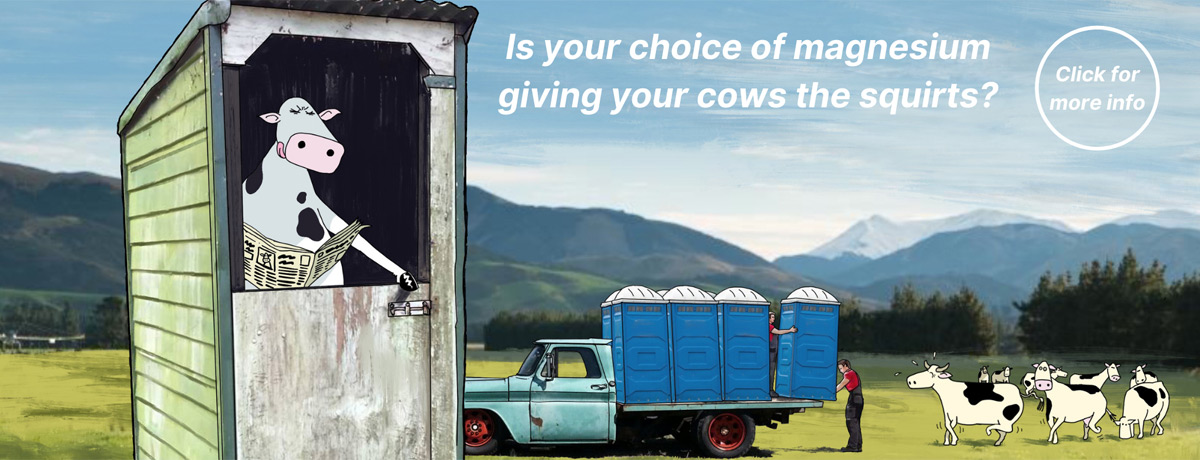Dr Joe McGrath, consulting animal nutritionist to Sollus NZ.

The headline might sound extreme and it’s only one possible cause of many on farm, but MPI have recently published an ACVM Guideline highlighting the probable link between magnesium oxide (MgO) and salmonella, and It could be happening to your cows.
It must be emphasized that Salmonella outbreaks on farm are often caused by multiple factors, including rapid changes to the diet (especially from dry/high fibre to wet fresh grass), poor effluent management and immunity compromised cows-the list goes on.
Our own experience is that salmonella can indeed be encouraged by MgO, especially in conjunction with some of the above factors. However, MgO supplementation doesn’t imply that salmonella arrives in the mineral itself. This suggestion has experienced nutritionists shuddering in their boots.
The MPI says that MgO prills and granules increase the risk of salmonellosis by a factor of 10.
That’s an important distinction. Some forms of MgO carry more risk than others. But cows need supplemental MgO. We can’t just exclude it from diets, so it’s critical to understand what the differences are that make one MgO product more likely to encourage salmonellosis than another.
Larger particles of MgO are often favoured in blending because they are dust free. The problem is MgO particles leaving the rumen intact. This maybe because large particle sizes take too long too react, or that smaller granular MgO were “over-cooked” during production causing their rate of reactivity to drop. The is generally not a problem but if the overall level of MgO added is too high or passage rate is high for some reason – like a fresh flush of grass – a portion can remain unreacted by the time it reaches the small intestine.
Once into the small intestine trouble begins to brew.
When MgO reacts in a solution it will drive pH up, in the rumen this means reducing the risk of acidosis and even potentially improving milk fat percentage. A great attribute.
However, if it reaches the small intestine unreacted, a lift in pH is not so great. It causes the environment to favor some bad bacteria that may already be present in the gut at trace levels, especially Salmonella.
To make things worse, the symptoms can make think your cows are mag deficient so you keep pouring more poor-quality mag in to fix the issue, further overloading the small intestine.
This is a risk that the Sollus team has always been aware of, so we developed a magnesium to be included in all our product forms, fine enough to react fully before it leaves the abomasum and, at the same time, dust free.
A high quality MgO is, simply put, just about the best Mag source for dairy cows. It is cost effective, has multiple effective attributes and should react quickly.
So as a farmer, question your feed suppliers, make them show you their solubility data.
And maybe, cheapest is not always best.